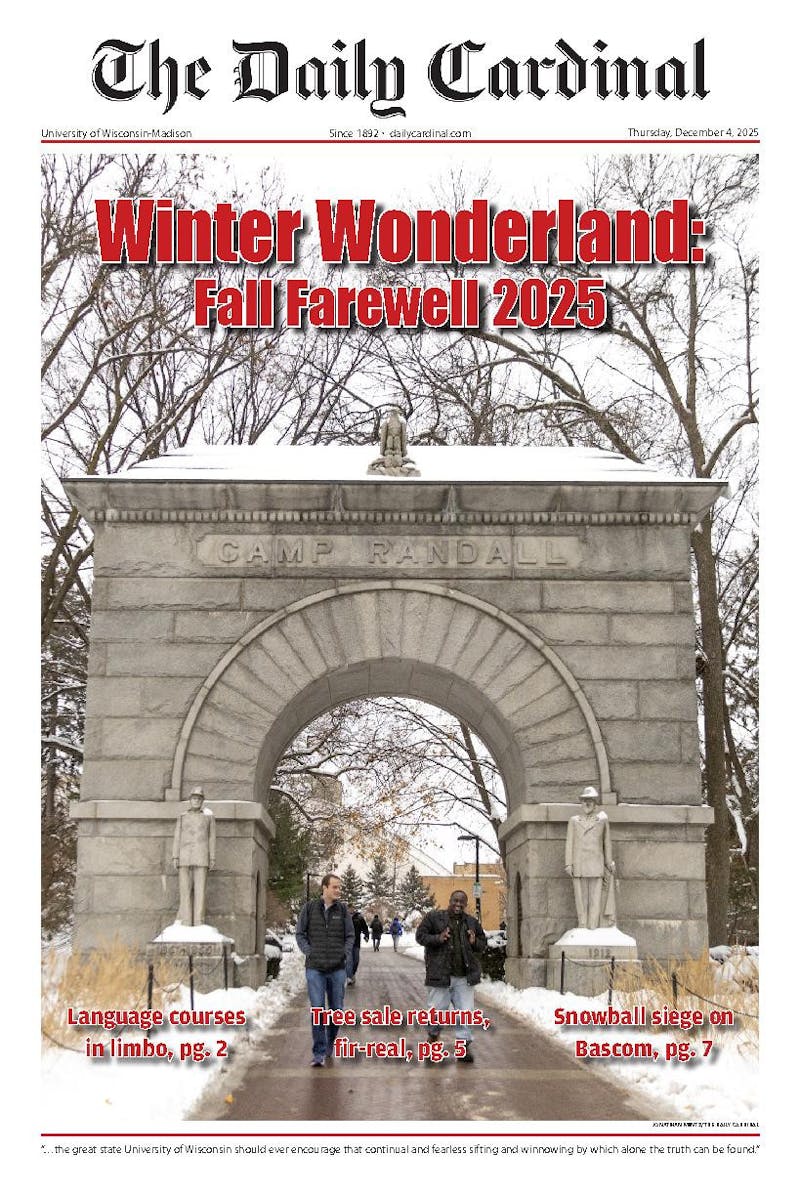The University of Wisconsin-Madison opened the new Computer, Data and Information Sciences (CDIS) building at the start of the fall semester, bringing together three of the campus’s fastest-growing majors under one roof and establishing a hub for research, education and outreach in technology.
The building houses the Departments of Computer Sciences and Statistics, as well as the Information School. Key partners include the Biostatistics & Medical Informatics Department and two major institutes: the Data Science institute and the Center for High Throughput Computing. Together, they represent the university’s largest majors — computer science and data science — and its rapidly growing information science program.
“This is a home for our students and faculty, finally under one roof,” Remzi Arpaci-Dusseau, the CDIS school’s director, told The Daily Cardinal. “We see it as the gravitational center of education, research and outreach in computer science, data science, statistics and information and library sciences.”
The lower floors focus on undergraduate life, featuring modern classrooms, the Gross Learning Center, advising offices and the Rebecca Blank Commons Library. Upper floors are dedicated to research, with facility offices, labs and graduate work spaces. The main spaces within the building feature bright natural light, lush greenery and lots of open space meant to encourage collaboration.
The classrooms are equipped with multiple screens, lecture-capture technology and whiteboards, reflecting a blend of traditional and modern teaching tools.
“Students expect materials in many different formats,” Arpaci-Dusseau said. “These tools support a dynamic learning environment, not just for our fields, but for any class on campus.”
The $267 million project was funded entirely by private donations, led by a gift from Tashia and John Morgridge, who graduated from the university in 1955. Support also came from the Wisconsin Alumni Research Foundation, Epic Systems, the Vilas Trust and hundreds of other alumni. The building is the largest in UW-Madison history to be fully funded by private donations.
“Our alumni and donors were excited to invest,” Arpaci-Dusseau said. “They see how computing and AI are changing the world and want UW at the forefront.”
Morgridge Hall’s private funding allowed the university to construct the facility without tapping state taxpayer dollars, which have gradually declined over the past two budget cycles. UW-Madison’s Humanities building was set to be demolished in 2026, but the state approved only a small portion of the funding requested.
Arpaci-Dusseau hopes the donor enthusiasm elevates UW-Madison’s profile in tech and innovation circles.
For students, the building offers something they didn’t have before: a dedicated study space for their majors. “Previously, computer science students rarely even had a class in the CS building,” Arpaci-Russeau said. “Now they come here to learn, study, get advising and participate in student-led organizations. Finally, they have a home on campus.”
Early reactions from faculty and students, he added, can be summed up in one word: “Wow.”
The new facility has already boosted UW-Madison’s visibility in technology and innovation. Morgridge now hosts the seventh nationally ranked computer science graduate program.
“It’s going to be a boon for recruiting faculty and students,” Arpaci-Russeau said. “The building shows the country that UW-Madison is investing in its future. It’s going to be a great ride.”
Alaina Walsh is the city news editor for The Daily Cardinal. She formally served as the associates news editor and has covered breaking news on city crimes, a variety of state and campus issues, the 2024 presidential election and the UW-Madison budget. You can follow her on twitter at @alaina_wal4347






